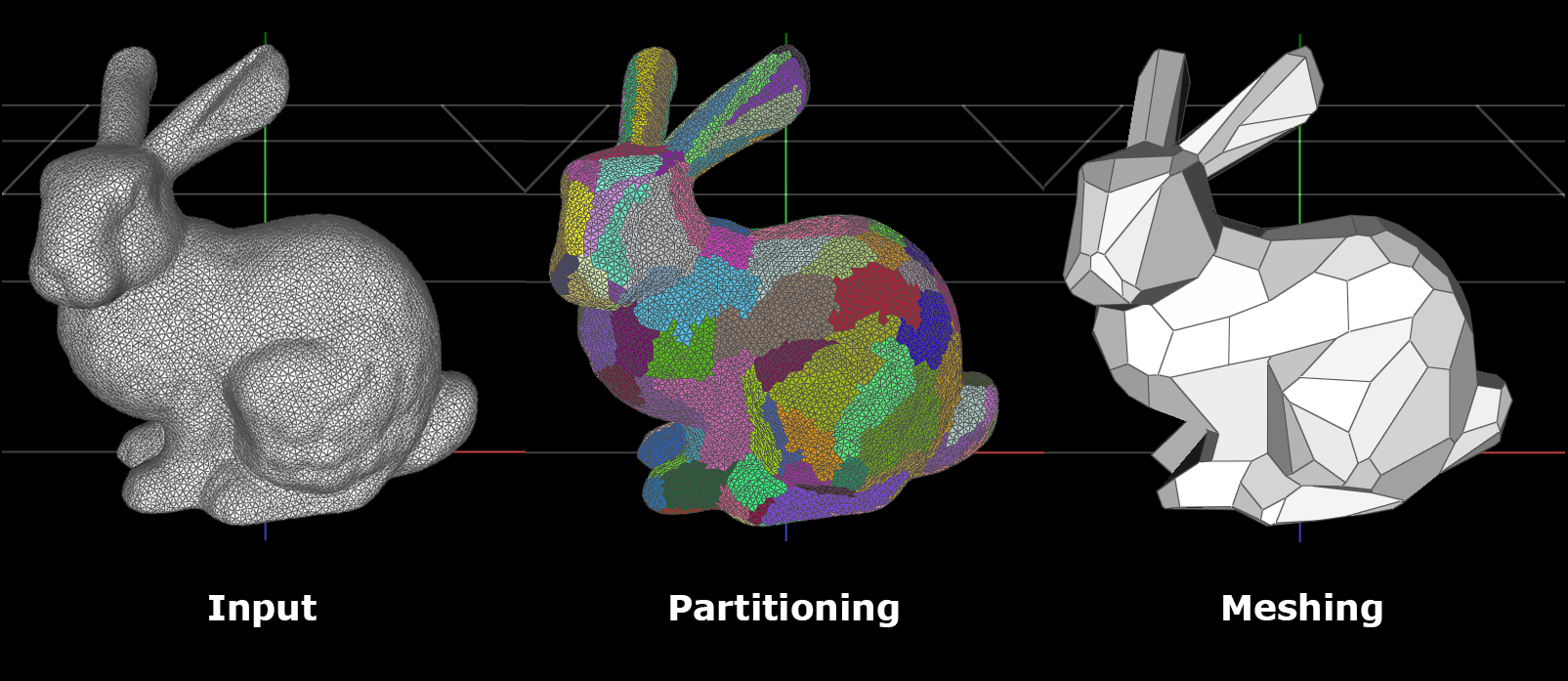Checkpoint - Project Model S
19 Nov 2017Checkpoint Results
Sequential Implementation of VSA
We have implemented the two major parts the Variational Shape Approximation as described in the reference research paper. Given an input mesh, VSA will first try to find an optimal partition using Lloyd Algorithm with L2,1 error metric. After Lloyd Algorithm converges, VSA will initiate a second meshing step, that builds a new simplified mesh from the result of first step.

CUDA Integration in Scotty3D
We have integrated CUDA in Scotty3D. Compilation is tested on GHC machines and Ubuntu 16.04 (with CMake 3.8.4 and CUDA 8.0 installed). CUDA function calls are tested on a Ubuntu machine with Nvidia GTX 1060 graphics card. Building on Windows with Visual Studio 2017 and CUDA 9.0 is being tested.
Adjancency List Representation of Mesh Faces
We have written a few functions to convert the original pointer chasing scheme of Scotty3D into a more parallel friendly data structure. The new data structure is an array of structs which store the particular face’s neighbors’ indices, normal vector, centroid, and whether the face is a boundary face or not. The idea is that when we want to go to a specific face, we don’t have to go through all the pointers until we find the one we want, but instead can specifically access the index in the array.
Baseline Performance Measurements
The following result is obtained on a MacBook Air machine with 1.7 GHz Intel Core i5 processor, with -O3 compiler optimization.
[VSA] Input Face Count = 28576, Proxy Count = 200, Iterations = 20
[VSA] Initialization Time (0.0012 sec)
[VSA] Flooding Time (0.8839 sec)
[VSA] Proxy fitting Time (0.2336 sec)
[VSA] Meshing Time (0.0656 sec)
As seen from the above results, flooding and proxy fitting takes up most of CPU time. We will focus on parallelizing those two routines.
Problems
Due to an X11 forwarding issue, we were not able to run Scotty3D on GHC machines. Although we still wish to run Scotty3D through X11 forwarding on GHC machines, we are working on an alternative approach to directly run the CUDA VSA algorithm bypassing X11 forwarding.
Schedule Checklist
Environment set up
- (FINISHED) Clean up Scotty3D
- (FINISHED) Implement part of the VSA algorithm
Working sequential algorithm on Scotty3D
- (FINISHED) Implement the whole set of algorithm in Scotty3D
- (FINISHED) Develop halfedge-like mesh data structure for CUDA
Preliminary CUDA Integration
- (FINISHED) Build up the CPU-GPU processing pipeline for input meshes
- (FINISHED) Support CUDA function call in Scotty3D
- (DOING RIGHT NOW) Test one or two parallel approches
Revised Schedule
Nov 27 2017 - Support for Interactive Simplification
- Test one or two parallel approches
- Test on large inputs
- Compare different approaches and continue optimizing
Dec 4 2017 - Parallel VSA finished
- Finish parallel VSA implementation
- Add features on top of VSA to support interactively adding and removing faces
Dec 11 2017 - Prepare for presentation
- Gather performance data
- Poster and documentation